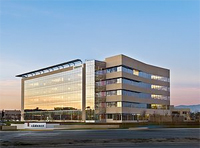 Cadence is at an interesting crossroads right now. The current management team is trying very hard to re-establish Cadence as a technology leader and rebuild partnership relations with their long-term customers, many of whom have been deep partners since the days of SDA.
Cadence is at an interesting crossroads right now. The current management team is trying very hard to re-establish Cadence as a technology leader and rebuild partnership relations with their long-term customers, many of whom have been deep partners since the days of SDA.
In the Fister years, customers would apparently never see anyone from engineering. That’s because Mike Fister considered himself technical enough he didn’t need any chaperone who really understood the underlying technology. After all, he was from Intel. In fact, many managers from Intel turn out not to be as good as they think they are. The facts of life inside Intel are that it is relatively easy to look good when there is so much margin bleed-through from their wildly profitable microprocessor line. And even with that leg-up, Intel does badly in most other businesses it has entered or tried to enter. However, the reality is that being a customer of EDA is not the same as having technical knowledge at the level necessary. So Lip-Bu’s approach of always taking a technical leader with him to customers is definitely positive (and Lip-Bu would win any technical are-wrestling match with Fister anyway). His modesty in doing this versus the Fister arrogance is also a welcome change. It serves both the requirement to educate customers on what is in development, and it allows engineering to hear directly what the customer issues are, unmediated by non-technical marketing and management types.
But one problem Cadence has, or may have, is comparative financial weakness. It has scheduled four weeks of shutdowns for the rest of this year. It has had one large layoff and is rumored to have another one coming. They had half-a-billion dollars in cash at the end of last year, which in a previous era they would have been able to use to make some key acquisitions (and, to be fair, more than Mentor or Magma has in the bank). But Fister said Cadence wouldn’t buy companies, so that was another nail in the coffin of VCs bothering to finance any startups for them to buy. They have to re-build their technology themselves, which they seem to be rolling up their sleeves and doing.
One thing that is unclear to me as an outsider (I used to work there but I’ve not had access to anything confidential for years) is just how much Fister/Bushby mortgaged Cadence’s future: they were rumored to be doing 6 and even 9 year deals, and then structuring them so the revenue was recognized up front. That gives Lip-Bu and his team a challenge, since customers like that are not going to be paying a lot of money for several years going forward. They were like those gyms that sell life-time subscriptions and then struggle since their gyms get full of people who expect service but are never going generate any money.
Last week, I met with Chi-Ping Hsu who runs the Cadence back-end tools (or “implementation products” as they call them). One thing that is very positive is that Chi-Ping himself, and all his direct reports, have experience of being CEOs or COOs of EDA startups. Those are jobs that require a great blend of technical knowledge, understanding of the development process, and business acumen, which is just what Cadence needs to recover competitiveness.
Cadence has acquired and developed a lot of technology over the last few years, and hadn’t historically done a very good job of integrating it together. The dirty laundry about the OA database when I was at Cadence was that there was really no roadmap to bring it into wide use internally. That issue, in particular, seems to be behind them, with both the custom and place/route flows now using OA (although they still have separate in-memory data structures). The Catena router, which was a skunk-works in Los Gatos for years, has been folded into the main development. Getting all the development done across Cadence (and the industry) to support the CPF power standard must have been like herding cats, but seems to have built a working flow.
The competitive environment is changing, of course. Synopsys, Magma and Springsoft are all circling around Cadence’s custom/analog franchise. Place and route has too many companies: in addition to Cadence there are Synopsys, Magma, Mentor/Sierra and Atoptech (plus a few other niche players). The front-end simulation is very commoditized and price-driven.
As an outside observer it seems that Cadence is doing a good job of getting its product development engine back on track and re-vitalizing the technology base. Everyone I know there says it feels different. But how much financial muscle they have to power that engine is an unknown.
